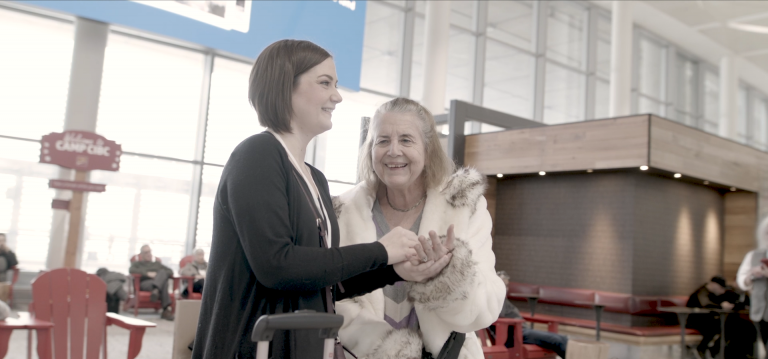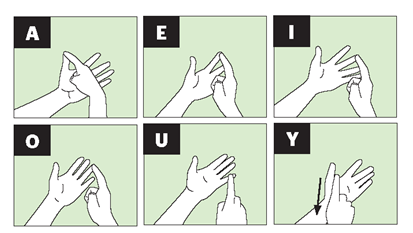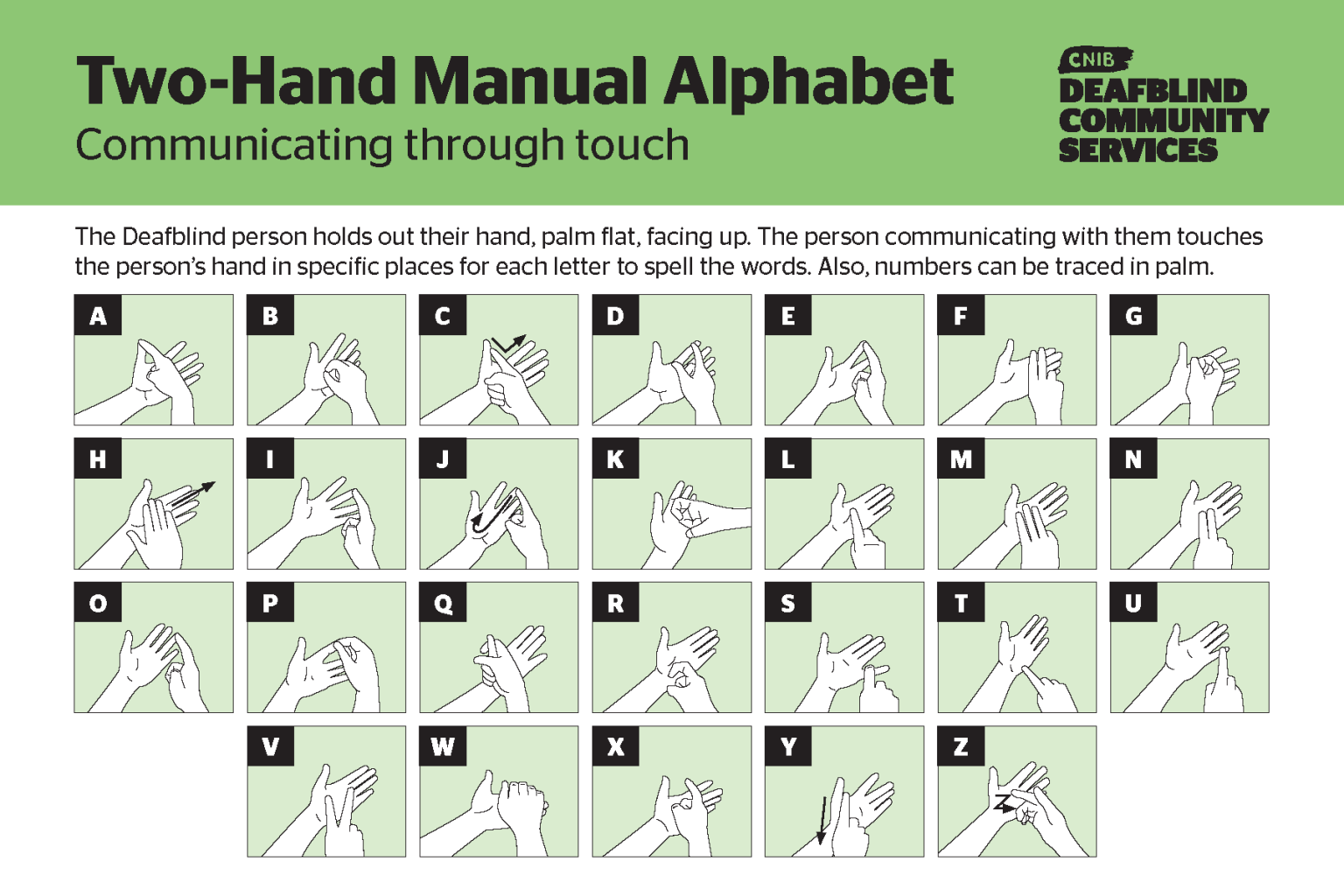
Did you know that there many different types of communication methods used by people who are Deafblind? One method of communication is known as “two-hand manual.” The two-hand manual alphabet a method of spelling out words onto a person’s hand – with each letter denoted by a particular sign or place on the hand.
Penny LeClair, DBCS board vice chair and client, uses two-hand manual every day. This is her story:
“I would like to tell you about the sign language I use: two-hand manual. But first, let me tell you a little about myself…
I have always been blind. I lost my hearing gradually later in my life – due to a hereditary condition passed down from my mother. Of the four children in our family, I experienced the most hearing loss at the earliest age. I depended on my hearing for so many functions of daily living. This has been the lowest point of my life. I came close to giving up. I never had thoughts of taking my life, but I could not see my worth through the grief of hearing loss. I knew that I would be totally deaf at some point in my later years. I decided to learn what I could do to communicate, as at this time I struggled to hear the essence of a conversation. Enter—two-hand manual sign.
Two-Hand Manual – Downloadable Accessible PDF
I had reasonable spelling skills and this form of sign is manual in the sense that it is spelling out words using different positions on the fingers and palm of my hand. The graphics included shows the letters that are formed by using the person signing into my open palm. It is easy to learn but does take practice.
There are many people within the deaf and/or blind community that may have no knowledge of this simple way to confirm those hard words to hear or to have numbers drawn into your palm.
My hearing loss causes me to personally struggle with high frequency sounds – as well as soft letters. I could not hear the “s” “f” or “t” sounds. I also often struggle with other sounds such as: “SH” “TH” and “CH”. Because of this, I often could not understand the words without guessing at what it might be. Once I learned two-hand manual, everything became so much clearer – everything was spelled into my hand – so I was sure I got the message.
Once you realize that six of the 26 letters are easy to remember, it becomes a far easier task to learn the rest. It is up-lifting to continue with the other letters. The vowels are often the easiest to master:
- “A” is done by the sender placing their index finger on the top of the thumb,
- “E” is formed the sender placing their index finger on the index finger,
- “I” is formed by the sender placing their index finger on the top of the middle finger,
- “O” is formed by the sender placing their index finger on the top of the ring finger,
- and yes, you probably guessed it, “U” is formed by the sender placing their index finger on the top of the pinky.
- Finally, the sixth easy letter is for Y. All you do is have your index finger go on the palm between the thumb and my index finger and down a few inches for the letter y.

So now you can spell YOU, index between thumb and index to go down a few inches down the palm, take that index finger and touch the top of ring finger and then touch baby finger.

What could be easier? After you learn letters, you try to have a rhythm of doing the letters to form words, so that a space is the rhythm beat that you do not do anything. Eventually, with practice you get into faster rhythms and the feel is kind of like typing.
Personally, I have developed ways to make this method faster to sign. I use short forms that are unique to me. I use a lot of contractions that are used in reading and writing Braille.
I want to spread the word about two-hand manual because it does make a huge difference in a person’s life to take some control over the difficulty of communicating. We must educate deaf people who can no longer lip-read or see writing that there is an option, communication is too important to everyone. American Sign Language (ASL) and Langue des signes du Québec (LSQ) can be done by touch, “hand-over-hand”.
Not all people who are deaf know ASL or LSQ. People who are blind and have lost so much hearing can lessen that problem by learning two-hand manual. I always have printed cards of the two-hand manual with me, and people can use them to learn my new way of communicating.
I try to utilize all ways of getting information. Two hand manual cost zero dollars can be done if touch is possible, and it is private, because chances are that those around you have no idea of what the message you are getting. So, in public a person can tell you anything and it is totally private. When it is extremely noisy, you will understand every word!
I welcome an opportunity to tell you more or to answer your questions. Contact an organization that provides intervenor services to learn how to form the letters and practice two hand manual.
Please contact me with any questions you may have at Penny.leclair@rogers.com

